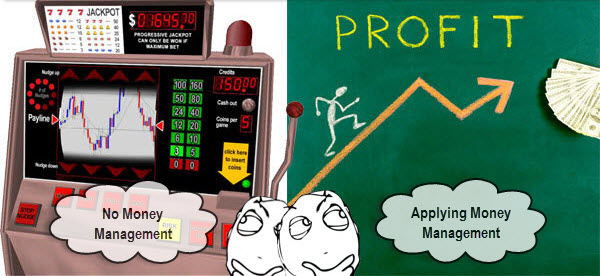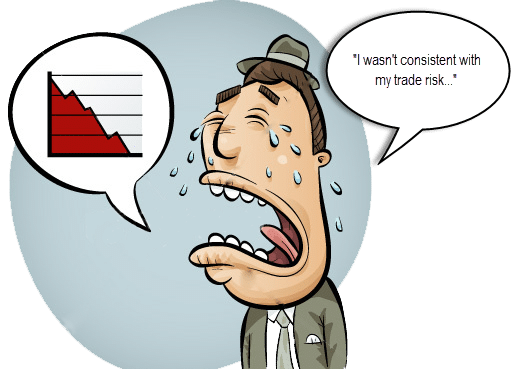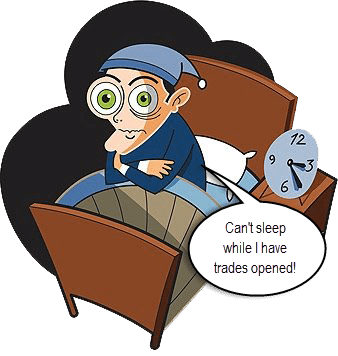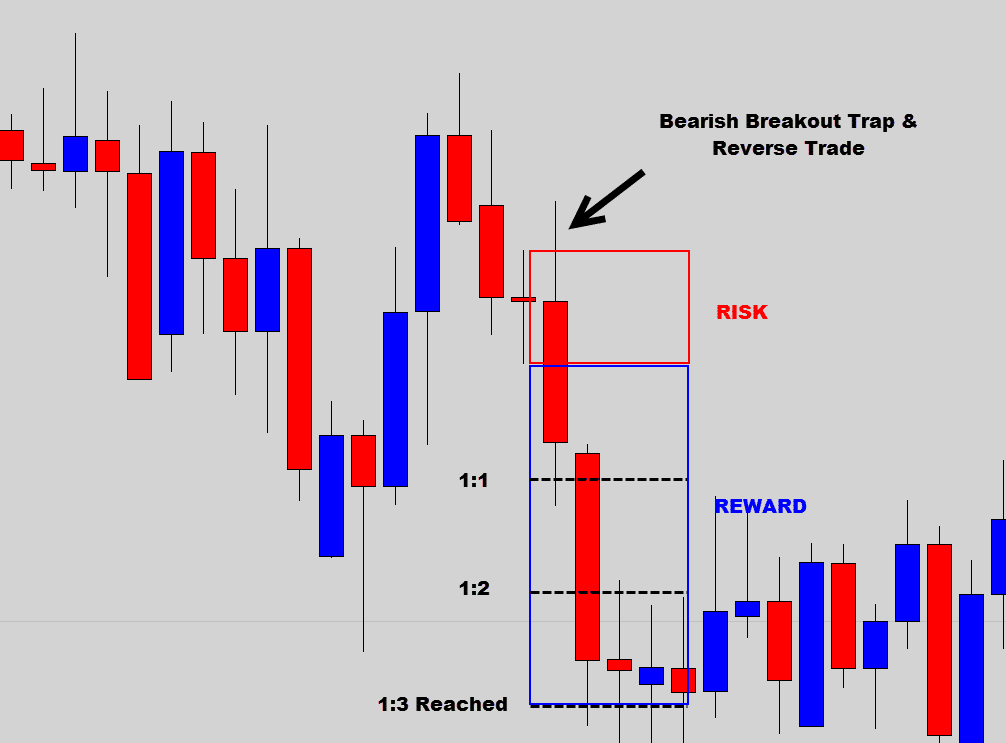Trading can be fun, mentally stimulating and rewarding on many levels. But you shouldn’t mistake it for the slot machine down at the casino. We’ve all come across traders who are addicted to trading, and many of them even have somewhat of a structured trading plan (surprisingly).
However, when it comes to managing their capital these traders tend to ‘wing it’; meaning they set each trade’s risk based on how they feel at the time. This type of random lot size placement is something the trader generally has no mental control over and regularly put themselves in situations of extreme capital exposure to the market – this is dangerous, stressful and no way to trade.
This is why trading systems need an included money management model, so in this article we are going to have a look at a basic concept that could make an immediate positive impact on your trading performance.

Why Money Management is Important

The point is this: all trading systems, no matter how exotic, need money management. Otherwise, they will completely derail themselves. Applying money management will help a Forex trading plan in a few ways…
1. Consistency
No more random lot size placing. Money management plans allow you to calculate your risk with high precision, right down to the decimal point. This takes all the guess work out of sizing up a trade position. If you’re just placing orders with random lot size numbers that pop in your head every time, you will have a very interesting equity curve.
By bringing in money management control, your trades will have consistent risk. With each trade you will know how much of a hit you’re going to take if your stop loss gets hit. There is no shame in having a stop loss triggered. No one wins 100% of their trades, and your money management plan should make sure that your winners outperform your losers.
Consistent risk will stabilize your trading immediately; this alone should be a good enough reason to start thinking about a money management plan.
2. Maximizing Trade Profit Potential
The problem with trading without money management is that you don’t really know for sure how much risk you’ve placed on each trade.
You could be over-risking on one trade and take a significant loss, then on the next trade under-risk and hit your target but the winnings are much less than they should be.
Your previous losing trade(s) are having an overwhelming effect on your profit. By recruiting a money management system, you will stabilize your risk by knowing exactly how much you’re risking on each trade.
This comes back to risk consistency, we’re not risking $1000 on trade A over here then only $100 on trade B over there. As an example our money management plan calculates that we should be risking $200 on each trade. This will stabilize the equity curve and allow you to sleep easier at night.
3. Money Management Helps Keep Emotions at Bay

With random lot size calculation or random stop loss placements, you really just don’t know what you’ve gotten yourself into. I am sure you anticipated the trade would work out in your favour when you placed the trade, but what if it doesn’t and you start losing more than you should?
This will start to bring up dangerous emotions that should never be mixed with trading. You might move your stop further away to ‘give the trade room to turn around’ or maybe just completely remove the stop all together, exposing 100% of your capital to the market. Or you may close a trade prematurely that would have actually hit your target, or you might even open up a new one to help recoup the accumulated losses. These are all dangerous practices which will do extreme damage to your mental health and make you sick from stress.
The idea of using money management is to avoid intervening on your trades emotionally. You’ll have consistency: you’ve already calculated how much you will lose if your stop gets hit, you know that you’re comfortable with it and you know that if the trade hits target you will get a good return on your investment.
This is a much better way to trade; it’s smart and a much better way to live your life. If you’re losing sleep over your trading then you’re doing something wrong.
4. Money Management Could be the Difference Between Failure and Success
If the points above haven’t convinced you to start applying a good Forex money management model to your trading business, then I don’t know what will. If you’re still keen on just throwing out randomized trades with no regards for risk, then withdraw your money, go down to the casino and have a good night out. At least this way you will go out with a bang and have some fun, not curled up in the corner of your room mentally destroyed by your Forex trading failure.
A good money management strategy could bring a below average trading system to life; that’s really just how powerful of an impact we are talking about here. You could even use the commonly known ‘simple moving average crossover’ trading strategy, apply some smart money management, and discover major improvements in the system’s performance.
One of the key attributes of a powerful plan is that it should project positive return on your investment. This is usually achieved through positive risk/reward ratios.
The Power of Risk/Reward Money Management

The Risk/Reward profile of a money management plan could be the difference between trading success or failure, so it’s important that you understand the concept and apply it correctly to your trading.
What is Risk/Reward?
Risk/Reward is the ratio of how much you’re risking on a trade vs. how much reward you’re targeting. Here is an example…
If we opened a trade with $100 risk, and we aimed for a profit target of $500 then our risk/reward would be $100/$500 or 1:5. We are risking $100 for a $500 return; this would be a 500% return on investment.
If we risked $20 and aimed for a $60 return, our risk/reward would be 1:3 ($20 risk/ $60 reward).
To recap: Risk/Reward (or R:R) is a measurement of how much you’re risking on a trade vs. how much you’re targeting in returns. This ratio is critical to your long-term trading success. But some traders do not apply risk/reward ratios correctly to their trading, and sink themselves faster than the Titanic.
The Dangers of Negative Risk/Reward Ratios
Some traders use money management tactics that can have devastating effects on their equity curve. For example, scalpers are traders who like to place lots of small quick in-and-out trades. They believe that being in the market a short amount of time gives them some sort of edge… We don’t agree. But let’s take a look at typical money management profile of a trader using high frequency trading strategies.
Because scalpers only aim for small targets, it’s hard for them to get positive return on investment. Here is why.
The market is full of many different participants who are all trading for different reasons; this causes vibrations in price which is just the ‘noise’ of all the market transactions taking place. If a scalper was to aim for a 3-pip profit target it’s very hard for them to set a stop loss that gives them a positive risk reward profile.
Let’s say a scalper wants a risk/reward ratio of 1:3, which means they will need a 1-pip stop loss because 1 pip stop/3 pip reward (1:3 risk/reward).
What about 1:2 risk/reward profile? 3-pip target would need a 1.5 pip stop … 1.5/3 = 1:2.
Alright so let’s go for 1:1… 3 pip stop/ 3 pip reward…
As you can see the stop loss sizing is unrealistic, with stop loss sizes so small the scalpers would be stopped out almost instantly from the market noise we talked about. At any given time the market could be vibrating up and down 5 pips randomly as all the money is exchanging hands across the world.
So scalpers get around this problem by using negative risk/reward ratios: they need to risk more than they expect back from the trade. A typical scalper might aim for a 5-pip return and set a 20-pip stop loss to ‘cover’ their trades from any market noise.
20 pip risk/ 5 pip reward = 4:1 Risk/Reward Ouch! Now we’ve gone into the negative side of risk/reward ratios, a position you don’t want to put yourself in.
Here is why: for every trade lost, this scalper will need to win 4 trades in a row to hit target. That’s right: 4 in a row, and if the scalper loses any trades in between that recovery period then it will set the them back another 4 trades needed to break even.

This is no way to trade, and I am pretty sure there are traders out there who would rather put a bullet in their head over using negative money management.
It’s very important that your risk/reward ratio remains positive or you will forever be chasing your own tail, and never get anywhere with trading. This is one of the reasons most Forex traders lose money.
How positive Risk Reward will give you the edge in your trading
Now that we understand the concept of risk reward ratios, let’s have a look at how positive risk reward ratios can really start to make you shine as a trader.
Remember, positive risk reward ratios mean that you are aiming for more than you risk every time you place a trade.
Positive risk reward means more return on your investment; the advantage here is that you can afford to take stop loss hits more than you think. In fact, it’s possible to lose more than ½ your trades and still turn over a profit if you have the correct risk reward.
This is because your winning trades make up for any losing trades you may have accumulated, plus the leftover profit on top. So even with losing trades you can still build up your equity curve, not like the scalper who uses negative risk reward profiles, whereas losing trades set the scalper back significantly.
Losing trades hardly create a dent in a trader’s account that uses a positive risk reward; the higher the risk reward profile, the more trades a trader can afford to lose without taking a hit.
In the table below we compare risk reward ratios and how many trades you can afford to lose before suffering a loss.
| Risk/Reward Ratio | Percentage of trades you can lose to break even |
| 1:1 | 50% |
| 1:2 | 66% |
| 1:3 | 75% |
| 1:4 | 80% |
| 1:5 | 83% |
| 1:6 | 86% |
So these figures tell us the percentage of trades we can lose and still hold a positive equity curve. With a 1:1 risk/reward profile we need to win 50% of our trades to break even. For each increase in risk/reward the percentage jumps up significantly before flattening out towards the end.
We do have to remember that the higher the reward targets, the harder or longer it is going to take for us to actually hit those return figures. 1:6 trades aren’t as easy to nail as a 1:2 trade is, because a 1:2 trade’s profit target is hit much more quickly.
So by referencing the table above we can see that about 1:3 is an optimal risk/reward target to use in your trading. We always recommend new traders start off by aiming for 1:3 with each trade: that’s a 300% return on risk.
This also gives the trader plenty of room to take a few hits; I mean the trader only has to win 25% of the time to break even, and 26% as a bare minimum to turn over profit in the long run.
In the chart below, we demonstrate how a bearish breakout trap & reverse trade on the daily chart produced an easy 1:3 return. The trade setup produced 3 times what was initially invested into it, positive risk reward money management and price action trading work extremely well together.

I am sure now you can understand the benefits of including a solid money management system in your trading system, and then even further improving the performance of your trading by introducing positive risk reward profiles.
In our Price Action Protocol trading course, we have 3 different money management models that a trader can apply to their trading, depending on their risk appetite.
We have the generic risk/reward money management plan, which is what we mostly use in the markets every day. The split-risk money management system which is a money management model that helps reduce risk exposure in the market but still maximizing profit potential.
These is also our extremely power pyramid money management system, which uses smart money management that can multiply profits exponentially while keeping risk exposure to the account extremely low.
If you would like to learn more about our money management systems, or the price action based trading system that we’ve been using in the markets for years successfully, then feel free to stop by our War Room information page.
I hope this article has been helpful and that you now have new look on how you apply money management to your Forex trading.
Cheers to your trading future.

Newt
Hello, Dale
I ask you to answer this
Should I only use 1:4 R:R being consistent with my risk and return on investment or can I be consistent with my risk only and aim to big returns on Investment like 1:3 then 1:13 then 1:6 on my Trades? I ask you to answer
Replying to: Newt
Agape
Depends on the market structure. If you cant find any strucutre for target profit, just be enough with ratio you are able to accept
Johnny Reb
Every time I place a trade, I measure pips on the chart from my entry to my stop loss and limits. This makes it easy to see risk/reward and calculate lot size for a $100 risk, However, I use reward/risk instead of risk/reward, and I always try to get at least 3:1.
Peter
Brilliant! Simple! Thanks again. Sad that teaching doesn’t pay as much as trading because you would have been great at it.
Jp
Very much informative as I am loosing on gold now
Paul
Makes a lot of sense i like the 1-3 /1-4 method will include that in my trading.
sentosa masyhor
im very like your method mr DALE. wait me and i want joint you at war room nex time
Anmol
Nice post btw keep it up ! I got a question, whats the max draw down you consider to have on a trading account before taking a break ?
Moffat Motingoe
Thank you very much again Dale. I will keep on remembering the ratio every time I place a trade. Please keep informing us so we can have risks and more profit. Every rim I trade I use this starters and it helps.
Steve Epperson
What I have decided to do is set a specific $ amount to be risked per trade, based on equity percentage. Also, my risk/reward is a minimum of 1:2. Slap me silly if I am wrong. Your articles are having an impact. Thank you.
Carlier
Very clear , easy to understand and to the point. why did I not apply this before, it would have spare me a lot of stress. Thank you Dale
johan
Dear Mr.Dale.It is possible to have 1:1 ratio?.
Replying to: johan
TheForexGuyAuthor
Of course, but you really need a net result of 1:3 – 1:4 on your trades to help you keep ahead.
king
im sad to say i was the negative trader, whipped out my acct so fast luckily it wasnt a large amount but still money is money…. im so glad i found your site TFG. i will definitely be buying into the war room soon. i know for sure u and the war room can take my trading to the next level
Greg
Do you have recommendation re. the use of a trailing stop? If so, what parameters are suggested? Thanks!
Replying to: Greg
TheForexGuyAuthor
I don’t use trailing stops very often. If you’re trying to ride a move on the daily chart, trailing by the previous candlestick low/high, or the previous candles’s ema value is something I suggest. You can’t do this ‘out of the box’ with MT4 – but if you’re a war room member, you can download my money management panel that will allow you to have this functionality, plus much more. It’s also setup to be a set and forget tool.
Vikash Pillay
Indeed that this forms an important part of any risk management plan in trading.
Thank you.
mohd fauzi ismail
Thank you mr.forexguy. Now i understand better how to trade forex sucesfully while keep risk very low. Thank you very much.